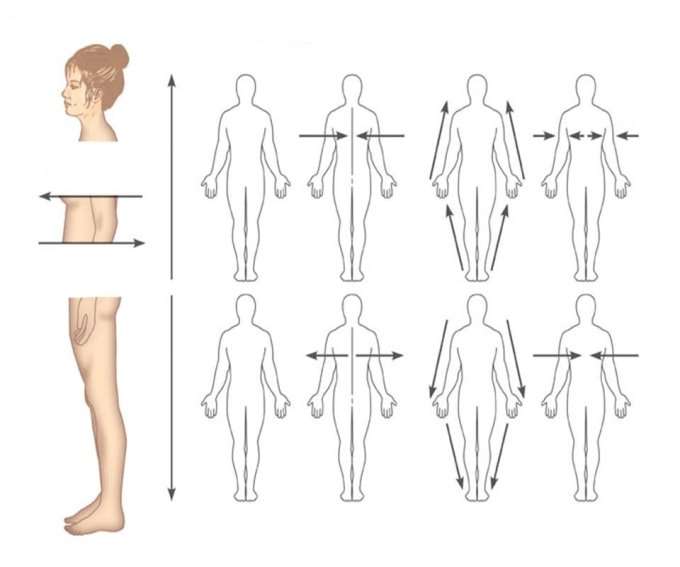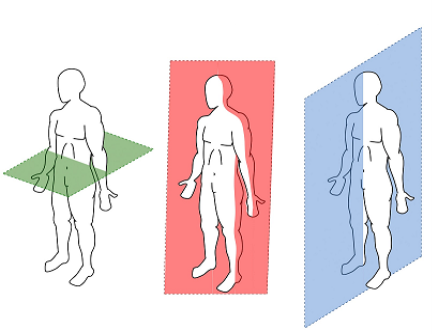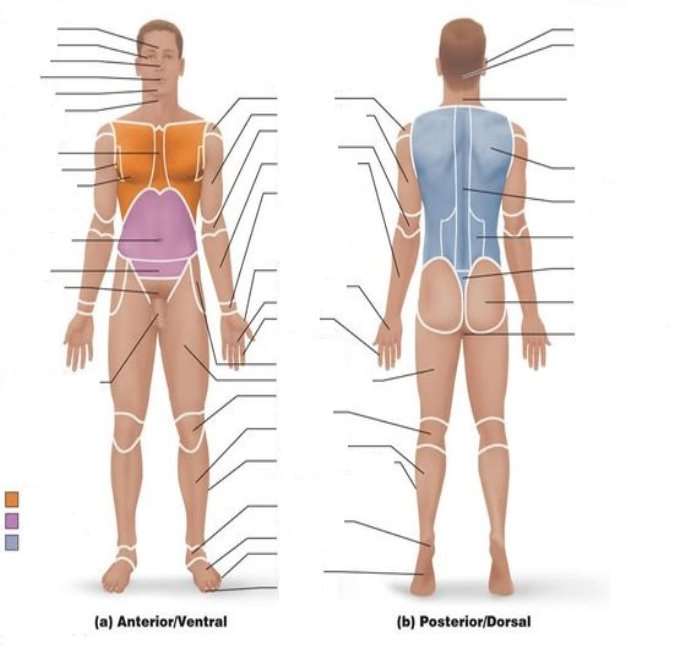Anatomy is a science for the study of different parts of living organisms, animal or plant types either by sectioning or other methods; it studies the size, structure and the relating elements, structuring a body, a plant, etc. We distinguish general anatomy, which also takes into account the analysis of physiology.
Physiology is the study of the mode of operation of the numerous existing living creatures. Specifically, it is about understanding how the human body works, the role of each organ and its functioning mechanisms found in the organism… but also, the function that each living organism occupies in its environment. When referring to the human anatomy and physiology, we are likely to be using the pathology to understand when the human body faces diseases and illnesses, caused by the dysfunction of certain organs and the symptoms that help specialists and scientists diagnose certain illnesses.
To understand the human anatomy, scientist and biologists use various anatomical terms to describe and locate parts of the body, so what are the directional terms, body planes and the terminology used to identify the various body regions?
We start with the directional terms, terms used by the anatomists and medical professionals to identify, locate and explain the body structure and positioning in regards to another.
As we can see below:
|
Definition |
Description |
Example |
|
Superior |
A structure above another |
The chin is superior to the navel |
|
Inferior |
A structure below another |
The navel is inferior to the chin. |
|
Superficial |
Towards or on the surface |
The skin is superficial to the muscle |
|
Deep |
Away from the surface, internal. |
The lungs are deep in the ribs |
|
Lateral |
Away from the midline of the body |
The nipple is lateral to the breast bone |
|
Medial |
Towards the midline of the body |
The nose is medial to the eye |
|
Proximal |
Closer to the point of attachment to the body than another structure |
The elbow is proximal to the wrist. |
|
Distal |
Farther from the point of attachment to the body than another structure |
The wrist is distal to the elbow |
|
Anterior |
The front of the body |
The navel is anterior to the spine |
|
Posterior |
The back of the body |
The spine is posterior to the breastbone |
|
Ipsilateral |
On the same side of the body |
Right arm and shoulder |
|
Contralateral |
On opposite sides of the body |
Legs |
|
Parietal |
Relating to a body cavity wall |
Bones of the skull |
|
Visceral |
Relating to organs within body cavities |
Lungs |
The diagram below explains the directional terms. Blank Canvas taken from Google. Figure.1











Figure 1. Directional Terms in Anatomy.
To understand the human body better, there are ways of facilitating the understanding of what lies inside, structure wise, body planes are one way.
Sagittal plane is a vertical plane that divides the body into equal right and left halves. If we cut the person in a straight vertical line from the head through the belly button and down to the toes, the median plane, therefore, result equal right and left halves of the body. See Fig.2
Coronal plane is a line/cut that separates the body into anterior and posterior parts, splits the body into front and back halves. This type of division is why the coronal plane is sometimes referred to as the ‘frontal plane’. See Fig.2
Transverse plane, this is a plane that divides the body into superior and inferior portions. This plane runs perpendicular to the coronal and median planes and in an upright human is parallel, or horizontal, to the ground. This is why it’s also called the ‘horizontal plane. Anatomy and Physiology for dummies.
See Fig.2 – Blank canvas taken from Google. Fig.2




Figure. 2 Body Planes in Anatomy
If we take the body standing in the following anatomical position as shown below Fig.3, I can recall these major regions (from the outside of the body) and how they relate to each other in the anatomical position highlighted as follows:
- The cephalic region (head) or cranial region (skull) is at the top of the body and visible from the front and rear.
- The cervical region (neck) starts below the head, ends at the thorax, and is visible from the front and rear from under the head to the shoulders.
- The dorsal region (back) runs from immediately below the neck down to the area below the waist. It doesn’t include the shoulders. It’s visible from the rear.
- The thorax starts immediately below the neck, at the clavicles, and ends along the bottom of the rib cage. It’s visible from the front.
- The abdomen starts along the bottom of the rib cage and extends to the hips. It’s visible from the front.
- The pelvis starts where the abdomen ends and takes up the area between the hip bones. The perineum is between the thighs so very little is visible in the anatomical position.
- The upper extremities include the shoulders, arms, forearms, elbows, wrists, and hands and are visible from the front and the back
- The lower extremities include the hips, buttocks, thighs, knees, legs, ankles, and feet. The buttocks are visible only from the rear, but the rest of the lower extremities are visible from the front and the rear.





































































Figure.3 Anatomical regional terms annotated diagram (blank canvas taken from Google)
Part B:
In histology a study of cells and tissues, the human body is a synchronised cycle of components, a structure harmonised and coherence between chemicals, cells, tissues, organs and systems to form a human body. As detailed briefly in the following order:






Every organism, humans, animals and plants are formed of cells. Animal cells and plant cells – have a joined characteristic like a nucleus, cytoplasm, cell membrane, mitochondria, and ribosomes. Plant cells have a cell wall, and most of the time a permanent chloroplast and vacuole. Each and specific cell has a special task or particular function, although there are different type of cells, the basic structure of a cell remains the same. Solutions pass into and out of the cells by diffusion; this sometimes is called osmosis when the water passes into and out of the cell. So what are the cell and tissue types and their functions in the human body?
A group of different types of cells form tissues in the human body and one or more types of tissues form organs that work together in a harmonious manner to form the organ system.
Nerve cells: These cells do not multiply in a human body life time. Once formed during fetus, they live till the entire life of a human body. They exist all over the body and some are as long as a few meters long. There are human brain cells and are found in a massive population in the brain and the spinal cord this is what forms the nervous tissue.
Bone cells (Osteocytes) These are considered the toughest body cell systems and are bound together by calcium and phosphate, they give strength, support and framework to the body by enclosing organs in skeletal system i.e. bones.
Cartilage cells (chondrocytes) these cells are made of a loose and flexible material. We find them in the ear, spinal bones, joints etc.
Muscle cells: There are three types: skeletal, cardiac and smooth muscle cells and are rich in proteins actin and myosin, muscle cells can contract and relax to provide movements.
Secretory cells: These cells secrete and form glands, for example: pancreatic cells which secrete insulin, glucagon, salivary gland secrete saliva, sebaceous gland secrete oil on the skin. They are found in all secretory organs.
Adipose cells: These are fat cells and considered as storage to store fat. Example: the soles, palms, buttocks, etc. They reduce friction to the body.
Blood cells: They are always mobile and active carry oxygen and nutrients to all cells and organs. They have limited life span and they never multiply to form new cells. Instead new cells are formed from other cells.
As we know, there are four types of tissues, Epithelial, Connective, muscular and nervous as I explained in the examples above.
Epithelium: its main function is to protect the human body from the outside world acts as a barrier i.e. skin. It also absorbs i.e. stomach and intestinal lining (gut). Also, it filters, i.e. kidneys and it secretes as the glands do. It’s also good at fixing itself, regenerating i.e. skin burns.
Connective: its main function is bound together, wrapping around and cushioning and protecting organs. Stores nutrients and give an internal support for organs, i.e. tendon and ligaments protect joints and attached muscles to bone and each other, it runs through organs and in deep layers of skin producing strength.
Nervous: this is very important as it is the communication element in the body to receive and give signals, this conducts impulses to and from body organs via neurons i.e. brain, spinal cord and nerves.
Muscle: this is responsible for the body movements, moves blood, food, and waste body’s organs and responsible for the mechanical digestion.
Cite This Work
To export a reference to this article please select a referencing style below:


